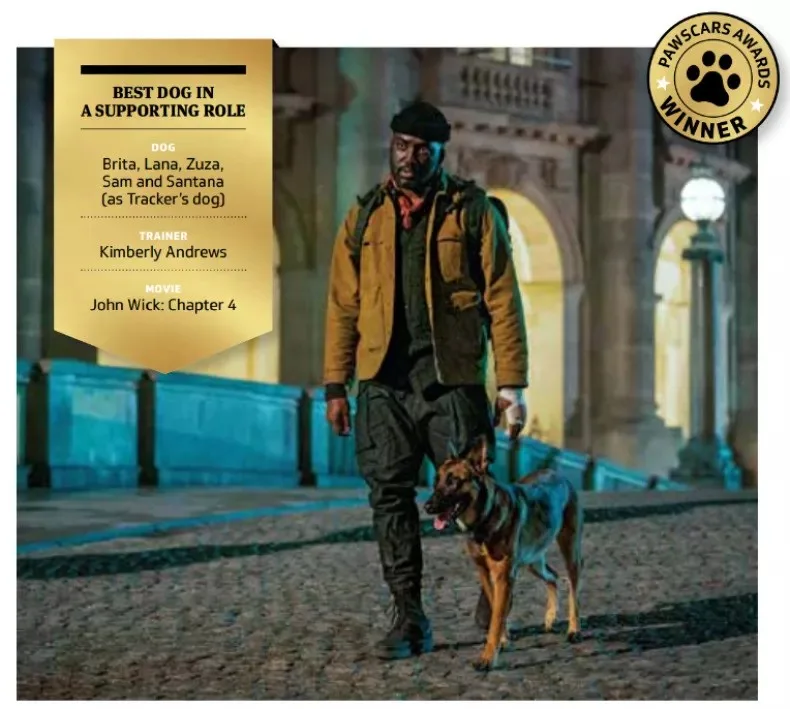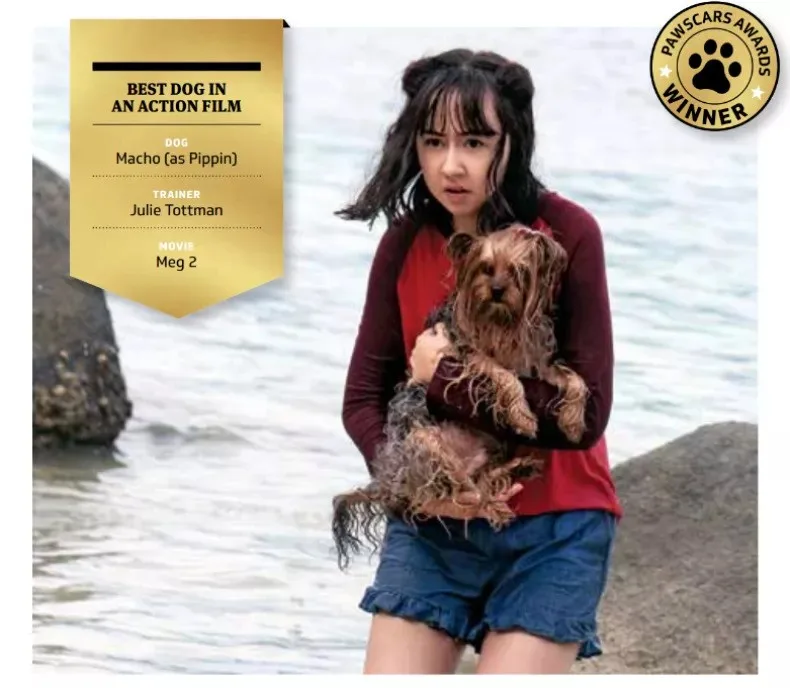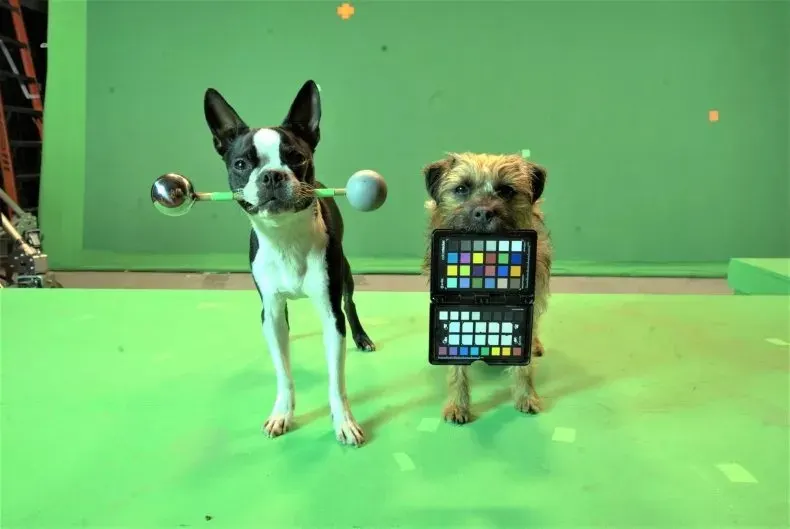When the temperature dipped below 70 degrees, the Strays movie crew had to bring in a heating pad because Benny, the Boston terrier that plays Bug, didn’t like his paws on wet grass, according to Josh Greenbaum, the film’s director.
“But his performance is great. So, we’ll do whatever he needs for his process,”
Greenbaum shared with Total Film.
It’s no surprise that the comedy Strays is winning more than one PAWSCARS Award. Three decades after Homeward Bound, the R-rated film relies heavily on dog actors.
Three out of the four main characters had never acted in a film before, and Benny couldn’t be more different from his character’s tough, street dog image.
Benny’s performance is matched by his new buddy Reggie, portrayed by a Border terrier named Sophie. The star of the film, she used head tilts and different walking speeds to express the emotions of a dog whose innocence gives way to newfound independence.
In one scene, Reggie crawls under a fence while the other dogs hold it open for her, and in another, Bug snatches off Reggie’s bandana.
It’s a moment that highlights the dogs’ decision to come together as a pack with a common goal, and it took several combinations of behaviors (and trainers) to get it just right.

Sophie didn’t always have a pack, though. She was the only dog in her litter and, as a COVID puppy, didn’t socialize with other dogs until she was on the film set, making her performance even more remarkable.
“She seemed to say, ‘I was born for this,'”
mentioned Mathilde de Cagny, a seasoned trainer.
A successful performance not only involves the animal executing the behavior but also captivating the audience. According to trainer Bill Berloni, known for his work on shows like And Just Like That, the dog must convey the emotion of the scene, such as wagging their tail to show joy.
The aim is to make the trainer, who’s using hand and noise cues, invisible to the viewers.
“You want the film to flow naturally and organically without a noticeable trainer on set,”
De Cagny explained.
“You fade into the background as a trainer, getting the dogs accustomed to working with other actors and dogs.”

In the drama The Creator, a little girl’s dog is held at gunpoint while a soldier interrogates villagers. Despite the chaos around it, the small brown dog, whose real name is Gollum, remains calm in the soldier’s arms, with its expressions mirroring a dog searching for its owner just a few feet away.
For Berloni, warning signs in films include a panting dog, darting eyes, or a hard stare at a trainer standing off to the side. These cues suggest that the animal may not be comfortable on set or might not be in the mood to perform at that moment, often due to inadequate preparation.
Berloni recounted instances where he prepared a dog for a specific stunt, only to find out on set that there were unexpected elements like smoke and fire engines, creating an unsafe environment for the dog.
Since the dog can’t speak up for itself, it falls on the trainer to ensure the animals’ well-being, even if it means risking their own career.
“It’s not uncommon for me to arrive on set and hear, ‘Oh, we forgot to mention that the building is on fire,'”
Berloni shared.
Trainer Gill Raddings, who has worked on films like Pirates of the Caribbean and Young Victoria, has left sets when she felt that an added element in a scene could jeopardize the dog’s safety due to lack of proper training.
It’s a tough call to make, but she believes that dogs deserve a fair chance to get the scene right. For instance, it’s unrealistic to expect a dog to remain completely still during a fight scene without prior warning, as such vulnerability goes against a dog’s natural instincts.

During a nighttime shoot on a film, trainer Megan-Kate Hoover, known for her work on Dark Waters and Extremely Wicked, Shockingly Evil and Vile, had a dog that needed to perform a basic command. However, once on set, a particular smell from an effect unsettled the dog, causing it to refuse to work.
“I still have nightmares about it,”
Hoover admitted.
Nevertheless, dogs can excel in action-packed films, as demonstrated by the canine actors in John Wick: Chapter 4. Dogs have played a vital role in the film series, and Tracker’s unnamed dog in the fourth installment has captured the hearts of viewers.
A loyal protector and companion, the Belgian malinois showcases the humanity of the assassin, Tracker, while also being a formidable partner in its own right. Played by five different dogs based on the required stunt or scene.

